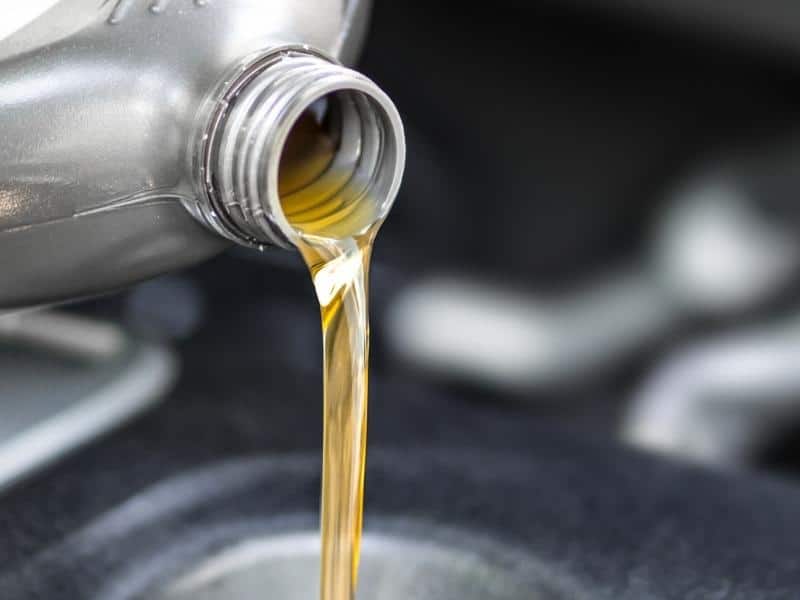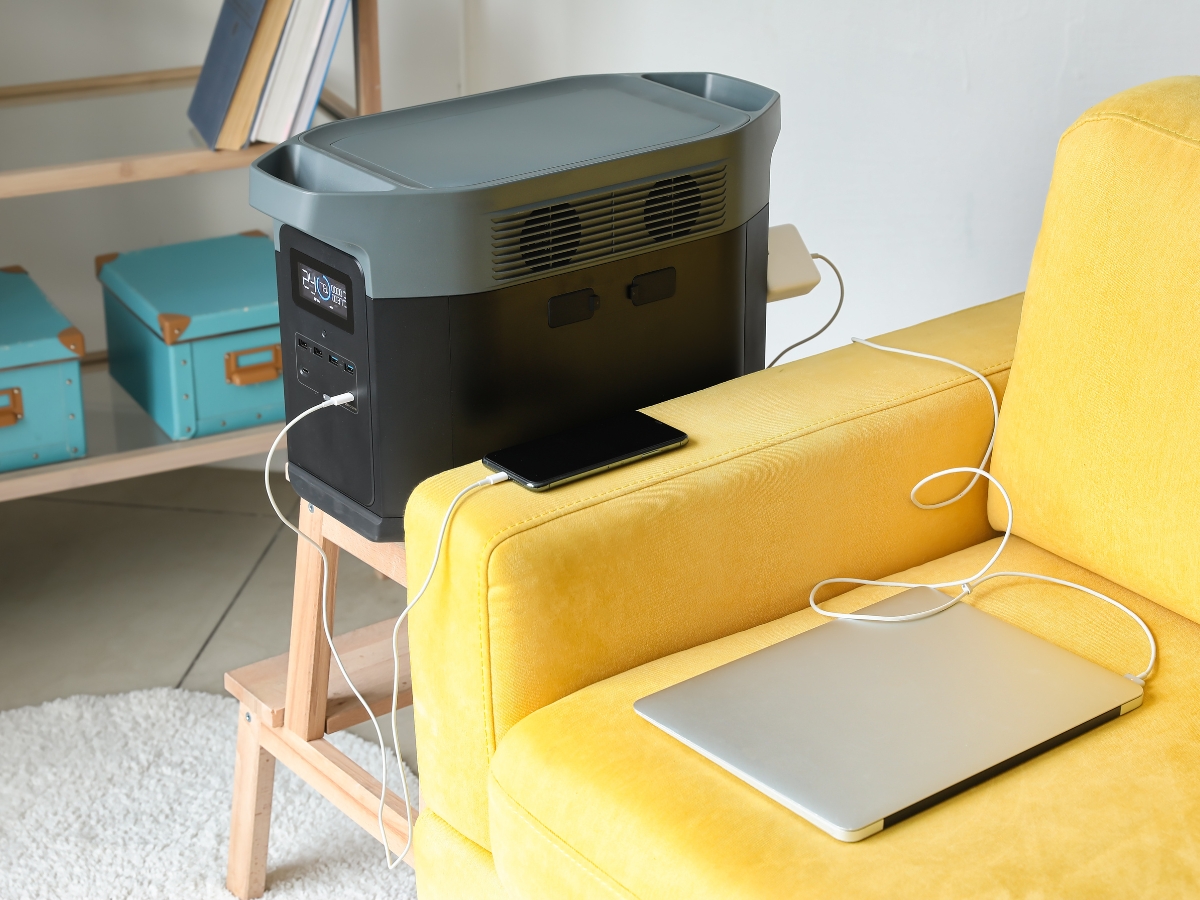Since synthetic motor oil first appeared on store shelves in the 1970s there have been questions about where it can and can not be used.
Synthetic motor oil can be used in just about every engine manufactured today. That applies to generators too! In most situations, synthetic oils are recommended by small engine manufacturers.
So, should you use synthetic oil in your new generator?
- The RIGHT oil for your generator.
- The weight and service category of oil.
- The best way to choose your oil.
For the general consumer, engine oil is pretty simple. There are several grades and categories of oil. Usually, we only need to find the right one for our application. Sometimes we may need to, or want to, deviate from the usual.
By understanding what different specifications on the motor oil label mean we can be sure we are always putting the best oil in our generator, improving its performance and extending its life.

What Is The RIGHT Oil For Your Generator
When we purchase a new generator, a quart of oil is usually included. If not, the manual will specify the proper oil weight to be used.
The oil included, or the grade specified in the manual should be the oil used for the break-in period. Unless specified otherwise, break-in oil should be conventional motor oil.
After the break-in period, you can switch to a synthetic or a synthetic blend if you would like to. As long as the weight and service category meets the engine manufacturer’s specification, the oil will be fine in your engine.
All the information you need is on the oil label.
Weights and Service Categories Included on Oil Bottle Labels.
- The API Donut.
- The ILSAC Starburst.
- The API Shield.
API Donut
The most important information most of us need to know about a bottle of oil is contained in the API Donut on the label. The name refers to the concentric circles that make up the icon and loosely resemble a donut.
The information contained within this icon tells us the weight and service category. The oil weight is in the center of the donut. The service category will appear within the ring, and/or under the donut.
Common oil weights are:
- SAE 0W-30
- SAE 10W-40
- SAE 80
Common service categories are:
- API SM
- API SN Plus
- API SP
Oil Weight
The oil weight refers to the viscosity of the oil. Most generator engine manufacturers will specify multi-weight oils. The most common muti-weight designations are 10W-30 and 10W-40.
The first number refers to the viscosity of the oil in cold weather: W indicates Winter. The second number indicates the viscosity at an operating temperature of 210º F.
There are single-weight oils, usually referred to as STRAIGHT WEIGHT oils. These are generally used as gear oils and are not intended for modern engines.
Service Category
The service category refers to the performance characteristics of the oil. The American Petroleum Institute (API) and the auto industry work in conjunction to establish this standard.
A new category is established every five to ten years. As of 2021, the current standard is API SP. A generator engine manufacturer may or may not specify a service category. Or, they may specify an older category (API SL for example).
The newer standard will encompass all the requirements of the older category. Using an oil rated at the newer standard will almost always be the safe bet.
The ILSAC Starburst and Shield Icons
Another oil standard that commonly appears on oil labels is the International Lubrication Specification Advisory Committee (ILSAC) Star.
Small engine manufacturers do not tend to include this specification, but may. The icon is a multi-pointed starburst. Within the starburst, FOR GASOLINE ENGINES will appear. The ILSAC standard will appear below the starburst.
The current ILSAC standard is GF-6A. You may also see the ILSAC Shield icon. This icon is fairly rare. It is used only on SAE 0W-16 oil.
The ILSAC designation is GF-6B. Do not put this oil in your generator unless specifically instructed to do so by the manual.
Icons to look for when selecting synthetic oil for your generator.
- API Donut with the proper weight designation.
- API Donut with the proper Service Category.
- ILSAC GF-6A Starburst.
Most quality oil brands will include at least two of these icons. If the icons do not appear on the front or back label, you should probably steer clear of the product.
If the icons do appear but do not include the specifications indicated by your owner’s manual, keep looking. Unless you have a very unique generator, the oil specified should be easy to find.
Changing Weights of Oil
Your generator’s manual will specify a preferred oil. In most cases, this oil will be a multi-weight oil that will protect the generator’s engine in normal operating conditions.
If you will be using your generator in extreme conditions, the engine manufacturer may recommend different weight oil. The manual may have a chart that indicates oil grades by temperature.
This chart will suggest that if the generator is being used in extreme cold, lighter weight oil may be appropriate. In hotter climates, heavier oil should be used.
The change will be only a 5 or 10 points difference in viscosity. Due to the stability of synthetic oils temperature is seldom an issue.
So, What Oil Should You Choose?
I have a mechanic friend who, when I asked him what oil I should use in my new generator, said, “Whichever one is on sale.” We laughed, but I knew what he meant.
Any good quality oil of the proper weight and service category will provide the protection any engine needs. Whether it be conventional, synthetic, or a blend, it will protect from the typical wear and tear a generator engine experiences.
I can say from experience, synthetic oil does make for an easier start-up in cold weather, better gas economy, and a cleaner running engine.
When Not To Use Synthetic Oil
There are only two reasons to not use synthetic oil in a generator. One is if the manufacturer specifically says not to. The second exception would be an older generator.
Conventional oil is notorious for leaving gunk in an engine. In some cases, this buildup will become integral to the function of the engine.
If synthetic oil is introduced to such an engine, the detergent in the oil may break down the buildup. This could lead to leaky seals and guides within the engine. I would not recommend switching a generator with over 500 hours of operating time.
If you have a new or fairly new generator that you are considering switching to synthetic oil, have at it. As long as you stick to the manufacturer’s recommended weight and service category the machine should run fine.
In fact, if you are like me, you will find it runs better than fine.
Resources



